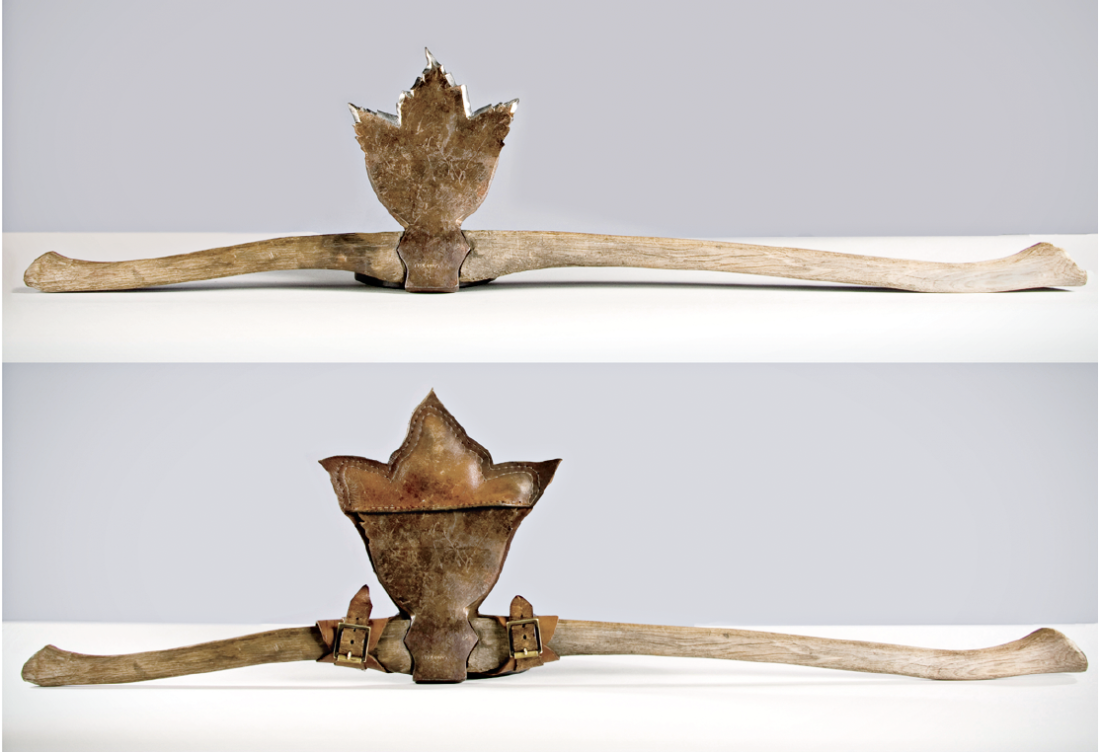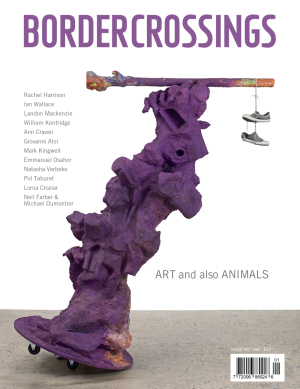Chris Stones
Born in the Port Arthur section of Thunder Bay in 1955, Christopher Stones has remained faithful to his origins, save for a few absences here and there, most notably to complete his MFA at the University of Waterloo in the mid-’90s. To engage with the tightly coherent selection of works showcased in “Material Memory” at the Thunder Bay Art Gallery, however, is to recognize that, beyond a strong affective tie to the nature and history surrounding his hometown, Stones possesses a particularly keen eye for the selection of materials and a unique ability to bring found objects to life. Thereby, under his care, a bunch of old axe handles is transformed, most poignantly, into a flock of cormorants, their black beaks pointed reproachfully to a “recovered section of dock” and, symbolically at least, to the heavens beyond (Rant of the Cormorants, 2009). Installed at the opposite end of the gallery, three tiny little rafts (Birdboats: Hull 1-3, 2010), carefully crafted out of bird bones and light wood, carry the solemnly displayed cadavers of local birds in an open reference to ancient water-based death rituals such as ship or boat burials.

Chris Stones, Chop Canadian, 2009, modified broad axe, 50 x 12 x 2”. Collection of Thunder Bay Art Gallery. Photograph: Peter Puna. Courtesy the artist.
With the emergence of issues ranging from the development, distribution and use of natural resources to the impact of climate change on temperature, water levels and local wildlife, the last few decades have been marked by numerous and extensive societal, economical and environmental changes in Stones’s region. In turn, these questions have come to inform his work and, indeed, they traverse “Material Memory” in the manner of a common thread. The mixed-media piece Chop Canadian, 2009, offers a characteristically ambiguous message: here, out of one single movement, a modified axe blade separates two wooden handles, while at the same time acting as a unifying agent for them. Chop Canadian invites multiple readings, ranging from a comment on Canada’s logging industry to an almost political statement on questions of national identity. While all the works on display present evocations of animal and human plight in the face of environmental changes and uncertainty, they remain, nonetheless, emphatically positive in their conveying of an almost Zen-like sense of warmth and harmony. Stones’s works communicate unity and equilibrium through the proportion of man-made objects (metallic parts or a ceramic knob for instance) to materials of purely organic origin (untreated wood, dead birds, fungus or water samples from Lake Superior). In most of the pieces, Stones appears to make a point of combining objects from both categories; the success of his practice stems from the effortlessness with which these combinations occur, as if both types of objects depended on each other to attain wholeness. Beyond references to the transient aspect of existence and the decay of all matter—natural and man-made alike—the implication is of an unequivocal necessity to uphold or reinstate harmony with nature, evident in his unique ability to conciliate the imperatives of conceptual art with a deep-seated love of nature. ❚
“Material Memory” was exhibited at the Thunder Bay Art Gallery from September 10 to October 31, 2010.
Caroline Bem is a doctoral student in the Department of Art History and Communication Studies at McGill University.

